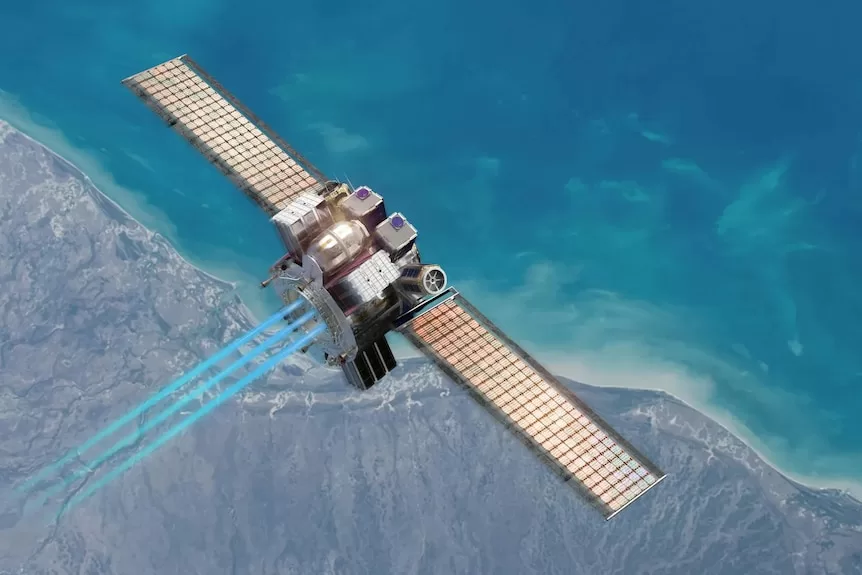- In short: The Optimus satellite created by Sydney-based Space Machines Company has launched from the US state of California aboard a SpaceX Falcon 9 rocket.
- The satellite is designed to repair and refuel other space infrastructure and will also test state-of-the-art printed solar cells developed by the CSIRO.
- What’s next? While Optimus is in orbit, another Australian company is planning to launch its own rocket into space later this year.
A 270-kilogram satellite packed with Australian-made technology has launched from the United States, aiming to help keep other satellites in space.
Sydney-based Space Machines Company’s Optimus satellite launched in California on Tuesday aboard a SpaceX Falcon 9 rocket, along with 53 other spacecraft on board.
The privately-owned satellite is designed to repair and refuel other space infrastructure and will also test state-of-the-art printed solar cells developed by the CSIRO.
It also features technology created by other Australian organisations, including Advanced Navigation, Orbit Fab and HEO.
The launch is the latest in a series of aerospace advancements for Australian firms over the past year, as more companies look to the sky for opportunities.
Space Machines Company chief executive Rajat Kulshrestha said the launch of Optimus was an important milestone as the commercial satellite was capable of repairing, refuelling, upgrading and relocating other satellites.
“Optimus enables us to provide services to extend satellite lifetimes, reduce space debris and sustainably scale space activities,” he said.
“We believe it will transform the economics of space infrastructure.”
The CSIRO’s space program director, Kimberley Clayfield, said the printed solar cells could be a “lightweight energy solution for space operations”.
“If the space flight test reveals similar performance as we’ve shown in the lab, this technology offers significant advantages over traditional silicon-based solar,” she said.
Eight mini-modules were attached to the surface of the Optimus satellite. CSIRO renewable energy systems group leader Anthony Chesman said the technology was designed to be more efficient than other technology.
“We expected our printed flexible solar cells will stand up to the effects of cosmic electron and gamma radiation, which can compromise the performance and integrity of traditional solar cells,” he said.
“We are also confident these cells will outperform traditional cells in cases where sunlight hits them at non-optimal angles.”
Other Australian technology on board the Optimus satellite includes an inertial navigation system from Advanced Navigation, fiducial markers from Orbit Fab to help orient the vehicle, and a non-Earth imaging camera designed by HEO.
The satellite launch, part of SpaceX’s Transporter-10 mission, is one of a growing number of launches and advancements by Australian organisations.
Canberra firm Skykraft launched five satellites in January as part of its plan to build a network of 200 to monitor air traffic, and the University of Melbourne launched a research satellite in December.
Gold Coast company Gilmour Space Technologies is also planning to launch a rocket into low-earth orbit in 2024 after receiving approval for its spaceport in Bowen, in north Queensland.
The first test flight at the site will go ahead in the coming months, Gilmour Space chief executive Adam Gilmour said, when the company receives approval from the Australian Space Agency.
AAP/ABC
